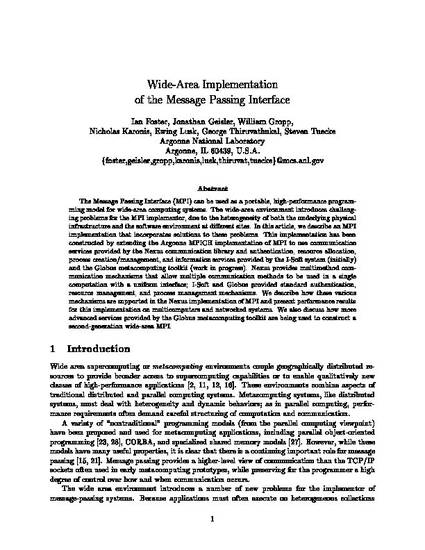
The Message Passing Interface (MPI) can be used as a portable, high-performance programming model for wide-area computing systems. The wide-area environment introduces challenging problems for the MPI implementor, due to the heterogeneity of both the underlying physical infrastructure and the software environment at different sites. In this article, we describe an MPI implementation that incorporates solutions to these problems. This implementation has beenconstructed by extending the Argonne MPICH implementation of MPI to use communicationservices provided by the Nexus communication library and authentication, resource allocation, process creation/management, and information services provided by the I-Soft system (initially) and the Globus metacomputing toolkit (work in progress). Nexus provides multimethod communication mechanisms that allow multiple communication methods to be used in a single computation with a uniform interface; I-Soft and Globus provided standard authentication,resource management, and process management mechanisms. We describe how these various mechanisms are supported in the Nexus implementation of MPI and present performance resultsfor this implementation on multicomputers and networked systems. We also discuss how more advanced services provided by the Globus metacomputing toolkit are being used to construct a second-generation wide-area MPI.
Copyright © 1998 Ian T. Foster, Jonathan Geisler, William Gropp, Nick Karonis, Ewing Lusk, George K. Thiruvathukal, and Steve Tuecke
